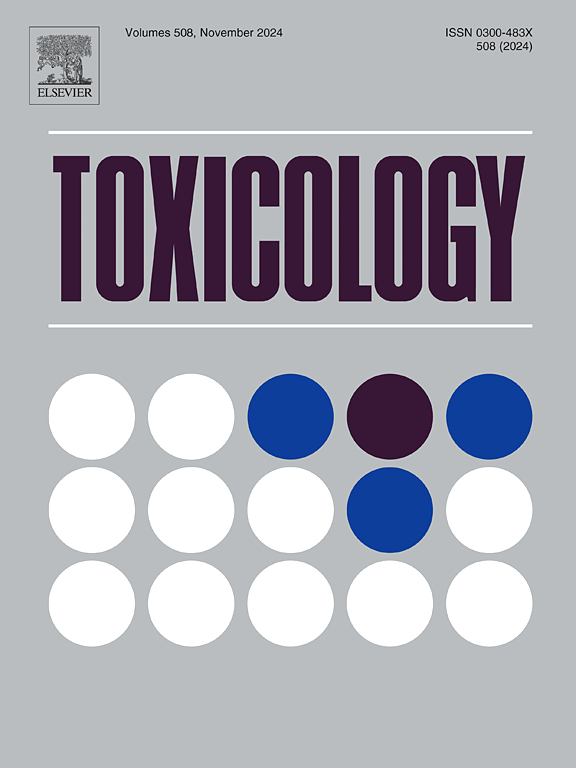对多溴联苯醚(PBDEs)的深入了解:从整体环境到中毒的洞察力。
IF 4.8
3区 医学
Q1 PHARMACOLOGY & PHARMACY
引用次数: 0
摘要
多溴联苯醚(PBDEs)是由两个苯环之间的酯键连接而成的溴化化合物。多溴联苯醚有 209 种同系物,根据溴原子的数量和位置进行分类。由于多溴联苯醚成本低、阻燃性能优异,自 20 世纪 70 年代以来,多溴联苯醚被广泛用作电子产品、塑料、纺织品和其他材料的阻燃剂。由于多溴联苯醚在环境中的持久性、生物累积性以及对人类和野生动物的毒性,根据《斯德哥尔摩公约》,多溴联苯醚被归类为持久性有机污染物(POPs)。由于多溴联苯醚的广泛使用和大量存在,已在各种环境和生物体内检测到多溴联苯醚。众所周知,这些化合物会对新陈代谢系统造成损害,表现出神经毒性,并对生殖系统造成危害。本综述研究了多溴联苯醚的环境分布和人类接触途径。文章以多溴联苯醚在中国的大量使用为例,强调了多溴联苯醚浓度在地区和时间上的巨大差异,并指出某些环境浓度水平可能对人类健康构成风险。文章随后探讨了多溴联苯醚对几个主要靶器官的毒性效应和机制,从多个毒理学角度总结了最新研究和这些毒性效应的具体机制。这篇综述加深了我们对多溴联苯醚的环境分布、暴露途径和毒性机制的了解,为进一步的研究和管理策略提供了宝贵的见解。本文章由计算机程序翻译,如有差异,请以英文原文为准。
Advanced understanding of the polybrominated diphenyl ethers (PBDEs): Insights from total environment to intoxication
Polybrominated diphenyl ethers (PBDEs) are brominated compounds connected by ester bonds between two benzene rings. There are 209 congeners of PBDEs, classified according to the number and position of the bromine atoms. Due to their low cost and superior flame retardant properties, PBDEs have been extensively used as flame retardants in electronic products, plastics, textiles, and other materials since the 1970s. PBDEs are classified as persistent organic pollutants (POPs) under the Stockholm Convention because of their environmental persistence, bioaccumulation, and toxicity to both humans and wildlife. Due to their extensive use and significant quantities, PBDEs have been detected across a range of environments and biological organisms. These compounds are known to cause damage to the metabolic system, exhibit neurotoxicity, and pose reproductive hazards. This review investigates the environmental distribution and human exposure pathways of PBDEs. Using China—a country with significant PBDE use—as an example, it highlights substantial regional and temporal variations in PBDE concentrations and notes that certain environmental levels may pose risks to human health. The article then examines the toxic effects and mechanisms of PBDEs on several major target organs, summarizing recent research and the specific mechanisms underlying these toxic effects from multiple toxicological perspectives. This review enhances our understanding of PBDEs' environmental distribution, exposure pathways, and toxic mechanisms, offering valuable insights for further research and management strategies.
求助全文
通过发布文献求助,成功后即可免费获取论文全文。
去求助
来源期刊

Toxicology
医学-毒理学
CiteScore
7.80
自引率
4.40%
发文量
222
审稿时长
23 days
期刊介绍:
Toxicology is an international, peer-reviewed journal that publishes only the highest quality original scientific research and critical reviews describing hypothesis-based investigations into mechanisms of toxicity associated with exposures to xenobiotic chemicals, particularly as it relates to human health. In this respect "mechanisms" is defined on both the macro (e.g. physiological, biological, kinetic, species, sex, etc.) and molecular (genomic, transcriptomic, metabolic, etc.) scale. Emphasis is placed on findings that identify novel hazards and that can be extrapolated to exposures and mechanisms that are relevant to estimating human risk. Toxicology also publishes brief communications, personal commentaries and opinion articles, as well as concise expert reviews on contemporary topics. All research and review articles published in Toxicology are subject to rigorous peer review. Authors are asked to contact the Editor-in-Chief prior to submitting review articles or commentaries for consideration for publication in Toxicology.
 求助内容:
求助内容: 应助结果提醒方式:
应助结果提醒方式:


